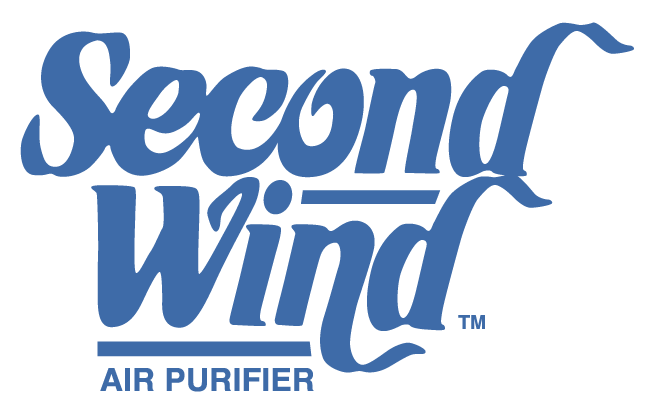- J. Paige Freeland
There’s truly no place like home, right? Walking in the door at the end of a long stressful day to your calm, welcoming refuge. Changing into comfortable clothes. Enjoying a tasty dinner. Sharing conversation with loved ones. Sleeping soundly in your warm, cozy bed. Feeling protected from the wind and rain outside. Locking the chaos of the outside world out. But what if you’ve unknowingly locked harm inside?
Many of us don’t put much thought into pollution other than that it comes from smokestacks, automobile emissions, dust, and factories in big cities where it’s unhealthy to live.

Studies, however, show that pollution indoors can be up to 5 times greater than pollution outside and people spend up to 90% of their time indoors. In addition, many sources of indoor air pollutants come from inside.

Outside, mother nature cleans the air with rain, wind, and sun. Indoors, however, airborne pollutants are trapped inside by closed doors and windows.
How do you know if the air you breathe indoors is healthy and free from harmful contaminants? Why does it matter and what can you do?
Ask Yourself These Questions
- Does anyone in our home suffer from allergies or asthma?
- Do I feel better when I leave home and worse again when I return?
- Do I often feel tired, have headaches, or have trouble concentrating?
- Are there pets in the home?
- Do we spend time on hobbies that utilize glues, solvents, varnishes, paints, or other chemicals?
- Do we have fireplaces?
- Do we often burn candles?
- Do fabrics and bedding continually feel damp?
- Do we use fertilizers or pesticides in and around the home?
- Do we suffer with dry skin and sinuses during winter months?
- Does someone in the home smoke tobacco products?
Look Around Your Home
- Do you observe cracks in wood during winter months?
- Is there excessive dust on your furniture?
- Are there cold drafts coming through windows and doors?
- Do you live along a dirt road or busy highway?
- Is mold hard to control in bathrooms or other areas?
- Is condensation building up on windows?
- Does your home smell musty?
- Does your home still feel humid and uncomfortable even though your air conditioning system is on high?
Consider Current Events
- Is there a forest fire occurring nearby?
- Have you experienced water damage from a leaking pipe, flood, or other event?
- Do you live in an area where dust storms occur?
- Is the pollen count particularly high?
If even one of the above is a concern it would be worth your while to discuss indoor air quality options with a qualified contractor. Here’s why.
Your Health – From the EPA
- Even short-term exposure to indoor air pollution can irritate the eyes and skin, cause headaches, drowsiness, nausea, dizziness, inability to concentrate, or loss of coordination.
- Long term exposure to indoor air pollution has been linked to higher incidents of allergy and asthma triggers, chronic respiratory disease, accelerated heart disease, diabetes, obesity, depression, cancer, damage to liver and kidneys, and more.
Your Comfort
- Air that’s too hot or cold is uncomfortable.
- Air that’s too dry or too moist is uncomfortable.
- Air heavy with pollutants causes discomfort.
What are the Sources of Indoor Pollution?

- Open windows and doors let pollutants inside, such as dust, pollen, forest fire particulates, and more.
- Pesticides, pollen, fertilizers, dust, and herbicides get inside via our shoes.
- Pet dander from our beloved pets.
- Particulates from chemicals used in hobbies (paint, paint thinner, glues, gasoline, etc.) travel throughout the home.
- Personal care items like aerosol deodorant, perfume, hairspray, or acetone.
- Fireplaces, tobacco smoke, candles, aerosols from cleaning agents, paints, and other chemicals all emit particulates into the air.
- Excess moisture increases pests attracted to moisture, encourages mold and mildew growth, exacerbates allergy and asthma triggers.
- Dust mites; greater in population with high humidity.
- Excess moisture increases the dust mite population.
What Can You Do?
GeneralAire indoor air quality products make a significant difference in removing indoor pollutants and offering greater health and comfort.
- Quality Air Cleaners: GeneralAire® MAC Air Cleaners offer MERV 11 filtration, removing up to 75% of micron sizes 1.0 to 3.0. A variety of models satisfy most any installation.

- Humidifiers: GeneralAire® offers a variety of humidifiers for small or large homes through evaporative, fan-assist evaporative, and electrode technologies. Adding humidity during winter months reduces the transmission of germs while making the home feel warmer.

- Dehumidifiers: Removing up to 100 pints per day, GeneralAire dehumidifiers offer Wi-Fi control so you can change parameters from anywhere with Wi-fi; even if you’re out of town! Reducing humidity in your home makes the air temperature feel cooler and drier in summer months.

- UV Air Purifiers: A wide variety of Second Wind™ UV Air Purifiers offer 24V, 100V, and 120V to inactivate germs, bacteria, VOC’s, mold, mildew, and odors. Select models prevent mold and mildew growth from growing on your furnace coils, thereby preventing distribution of mold and mildew spores throughout your home.

Room Units Vs Whole House
- Room:
- Room units are more popular for their low cost.
- Room units, however, only treat one room. As you move to other rooms you are no longer protected.
- Room units require more frequent maintenance that can be messy and inconvenient.
- Room units take up valuable living space and may look unattractive with your decor.
- Whole House:
- Whole house units represent a larger strain on your pocketbook to install; however:
- Whole house units treat every room in the home.
- Whole house units require little maintenance.
- Whole house units are quiet and out-of-site.
- Whole house units are installed with your HVAC system vs using up living space.
- Whole house units represent a larger strain on your pocketbook to install; however:
Last Thoughts
Taking care of our health requires certain choices. The choice to exercise, eat healthy, drink clean water, spend time with loving and supportive people, get enough rest, and refrain from drugs or other harmful habits. We often, however, take the air we breathe for granted when in fact it’s one of the most important things to consider regarding our health.
- Consider the average respiratory rate for an adult is 18 breaths per minute yet much higher in infants. Air is continually circulating through our lungs and body 24 hours a day, 365 days a year; therefore, the influence of poor indoor air quality on one’s health is never-ending.
- Health issues caused by indoor air pollution are inconvenient, unpleasant, time consuming, sometimes life altering, and costly.
- Home damage caused by poor indoor air quality is also costly and frustrating.
Investing in indoor air quality accessories protects your health, comfort, and home assets, while also helping you save on utilities. Products can be customized to your specific needs, utilizing a comprehensive approach to ensure all issues are addressed. To protect your health, comfort, and home assets, contact a qualified contractor today to start the discussion.









